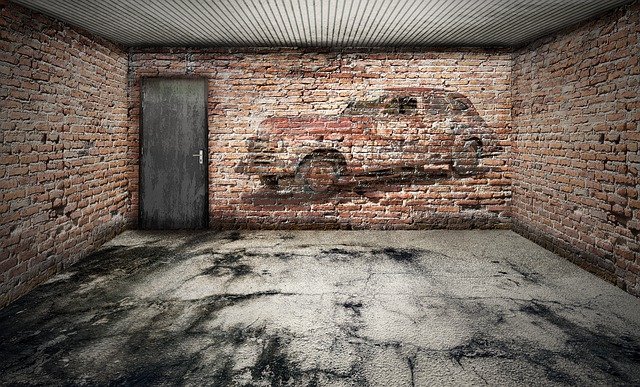How to Remove Paint from Metal with Baking Soda
Suppose you require a non-toxic method for removing paint; I recommend baking soda and boiling water – this is the topic of discussion in the current article to polish your metallic doorknobs and hinges or metallic garages floors.

You’ll use the household baking soda (home remedy), and it won’t also require specialized tools, painting knowledge, or equipment. Baking soda will refresh the surface of the hinges and wall paints with no hazardous fumes.
In summary, here’s how to remove paint from metal with baking soda;
- Fill your large bowl with water (1-quart), place the pot over a fire, and add some baking soda (1/4 a cup) but don’t stir and allow the water to get to a low boil.
- Hold the painted metal with tongs, put it inside the baking soda solution (leave for 15 minutes), and finally remove the metal piece – scrub off the paint using a cloth or toothbrush.
Details: How to Remove Paint from Metal with Baking Soda
Why use baking soda to strip paint? There are many methods of removing paint, including metal. So, baking soda is one of them. The tools and materials required.
- Baking soda
- Big bowl
- Scrubbing brush
- Clean Water
- Drop cloths
- Dry rag
Step 1: Fill the pot with Water
First, fill your large bowl with water about one quarter – get a pot that’s enough to allow the metal piece to be completely immersed into the water.
NB; Use a pot that you won’t be used for cooking purposes – eithe5r for humans or pets. The pot must not be leaking as this will hinder an effective paint removal on metal areas.
For most DIY homeowners, baking soda will strip paint effectively, and it doesn’t need extensive surface preparation, such as covering the area with newspapers its clothes. But you may require to wear protecting gear such as painting goggles.
- Further, using baking soda is cost-friendly compared to using steamers or chemical strippers.
- It is also readily available in the kitchen or at your local grocery store – you’ll easily strip the paint from the metal parts.
Step 2: Add Baking Soda
Next, place the pot (with one quarter-filled water) and then add a 1/4 a cup of kitchen baking soda. But don’t stir the baking soda hat you’ve added into the water.
Let the baking soda settle at the bottom of the pot before low boiling the water over a fire.
- The baking soda + water solution will remove most paint types from carpet and metal, and it won’t damage the material.
Step 3: Low Boil the Water
Upon turning on your stove, allow the water to low-boil the water with baking soda – turn off the stove once the water begins bubbling lightly.
Allow the baking soda solution to simmer. Prepare the surface where you’ll place the painted item for drying – on the piece of your dry cloth.
- The eco-friendly paint stripping method will safely remove paint on your material, including on plastics and metal, with no cases of unpleasant fumes or harsh chemicals.
Step 4: Lower the Metal Piece into the Water
Now, hold your painted metal piece with the tongs and lower it into the baking soda + water mixture that’s simmering.
Don’t let the metal hardware touch each other while in the baking soda mixture – and they must not touch the sides of your pot. Then, leave the metal piece inside the water for about 15 minutes.
Step 5: Let the Mixture Boil for 15 to 20 minutes.
Boil your baking soda mixture (with the metal piece inside) for roughly 15 to 20 minutes. This boiling process enables the paint on the metal piece to bubble and gets removed.
The paint will be removed on the principle that metal and paint will expend differently under various temperatures – and this allows an easy breakage of their bond and hence easy stripping.
Then, get the metal item from your billing water using tongs. Allow it to dry and cool off on the clean surface or area that you had prepared earlier.
Finally, scrub the metal piece using some dry cloth or some scrubbing brush – this will help remove and soda or paint residues. Wipe down the metal piece using a dry and fresh rag.
FAQs 1: Natural Metal Paint Removal Alternatives
1. Paint Stripping With Chemicals
You can use a variety of chemical removers on your paint. A key consideration is to go through the product label instructions – determine if it’s a paste, aerosol, or liquid paint removers.
Consider the material you’ll be working on using the chemical paint strippers. For smaller pieces, you can use liquid removers as they’ll dry quickly. On the other hand, aerosol sprays will be great for short-time drying.
Many of the paint removers require covering the metal item using the stripper, allow it time to activate before finally rinsing the piece in water. Also, you can chisel away the metal to remove the paint.
2. Using Heat Guns for Paint Removal
Heat guns are useful tools for mending plastic and paint removal or even repairing cell phones. The heat tends to soften the paint quickly, and hence it’ll bubble up and thus becomes simple to scrape off using a metal scraper.
After the bulk of your paint is removed, it is time to undertake some final touches. For this task, get some steel wool to help in scraping off any of the remaining paint dots – and finally, use white spirits to rub down everything.
You may also use vinegar for paint removal, including on different hardware surfaces, and it won’t generate toxic fumes.
The baking soda (NAHCO3) is suitable, but ARMEX (with 70-270 microns particle) has features that allow great rinse-ability and flowability. You may also use sand since it’s a harder abrasive for the paint blasting process.
Is soda blasting dangerous? You’ll find baking soda (also described as Sodium bicarbonate) safe to use around both animals and humans. It won’t cause skin burns or generate toxic fumes.
Conclusion
So, in this article, I’ve covered how to remove paint from metal with baking soda with much ease and limited health risks. But the paint removal method is only suitable for cleaning small metals.
Thus, for large metal objects such as metal doors and big metallic boards, you’ll require to use other methods – I recommend using the practices described in this guide.




